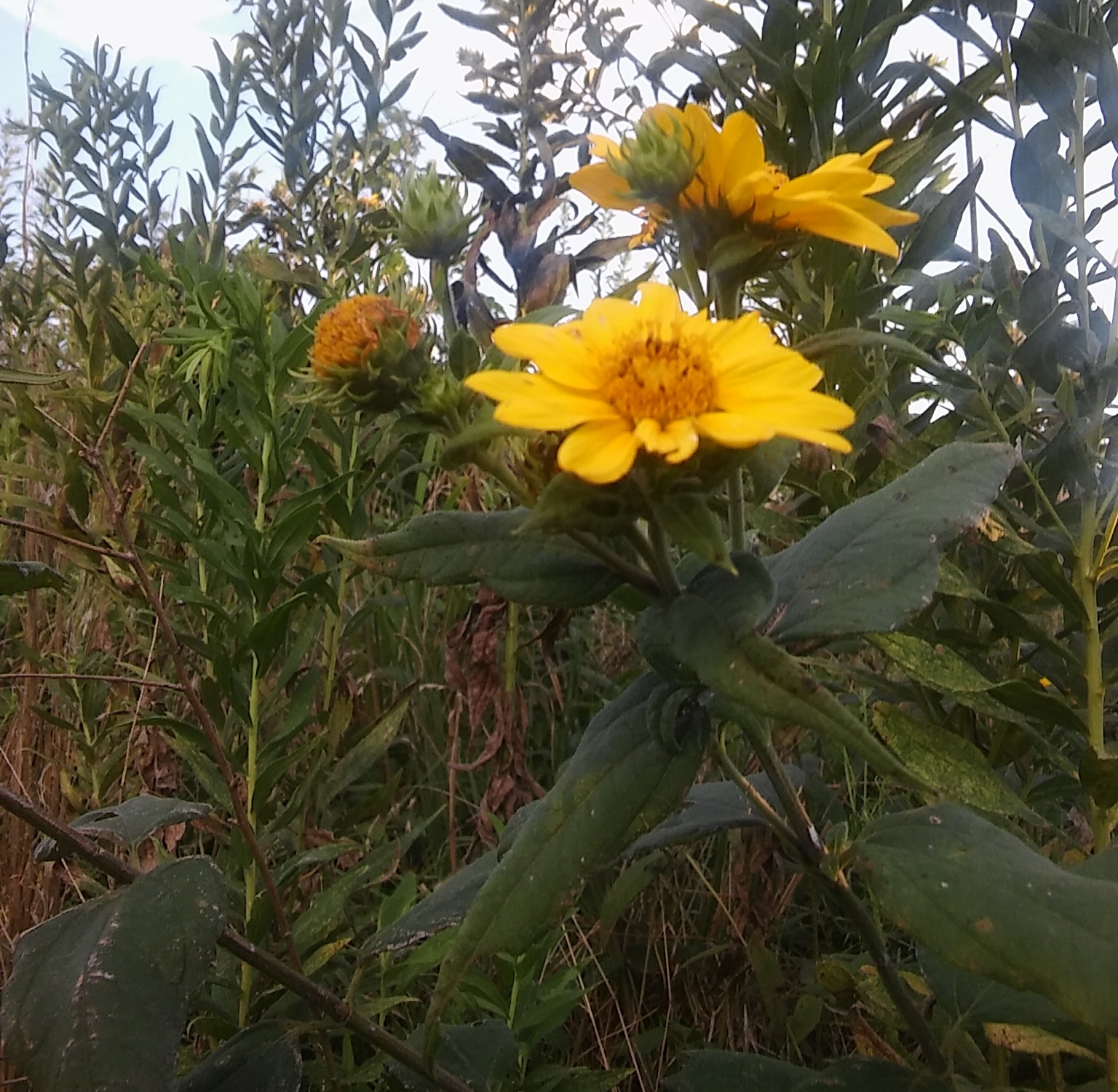I should have posted this series earlier in the summer, but there is still time. While school is out and family vacations are in, while summer camp is in play, but most importantly, while summer vegetation is plumed out with leaves and flowers, or while seed pods are still in forming and stems are still green and growing–it is a good time to identify and note the location of materials that will become less identifiable (for hand drill fire starting) as fall arrives and vegetation matures and turns brown.
There are so many of these materials that can be utilized that I will make several posts in order to give time for me to get them together and for readers to start identifying these materials. I have been very occupied in other pursuits of late, but I will try to do this quickly enough to help those who want to learn to identify the best hand drill spindle materials to best advantage–while it is still Summer. Once the materials are scouted out and located with all the best hints still available, they can be marked for later harvest, when they become dry and usable for fire making. They can also be harvested while green and put up and allowed to dry.
The following are some examples of such plant materials as found growing in the wilds by summer.
Goldenrod, Solidago, Fleabane, Horsetail, and Butterfly Weed

All of these group together in my mind when it comes to plants with stems suitable for hand drill fire making. Early in the summer, they look very similar to one another until they have flowers or seedpods and/or down. And for they are all more or less usable when dry. They have harder outer stems with pithy inner stems.–which are desirable characteristics, if not not basic essentials for making hand drill fire. They are all of the broader Aster family–I think. My favorites are the bigger varieties of Goldenrod, which I have come to call Solidago. For me, a larger diameter spindle is also desirable, although some argue and seem to have success with the smaller spindles.I can’t argue with success. Just saying that those about as big around as my medium-sized index finger or thumb have worked best for me. These bigger stems also seem to offer greater support for the downward pressure that increases friction and thereby gets and ember sooner.

Horsetail or Marestail
Butterfly Weed. Several plants go by this name. The ones I am referring to are easily identifiable for a few weeks during the summer when the tops are adorned with orange clustered flowers that attract butterflies and bees. Another comm name for these is Milkweed.

Sometimes called Milkweed, also called Butterfly Weed, the bright Orange flowers make for easy identification when in bloom. It is a constant attraction for butterflies; three cabbage moths were flitting around this one when I took this image, catching just one that had alighted on a blossom. Note the shape of the leaves as additional confirmation of its kind–when not in bloom. Dried stems are often left with an array of branches that fan out in a cupping formation evident from last year’s growth seen partially just behind and directly above the fresh flower here.
They are hard to miss at this flower stage. But prior to this, I sometimes mistake them for Goldenrod (Solidago) because the leaves are similar–although close observation will show them to be smaller and more closely spaced. The flowers of each plant turn to seeds with fluffy down that will be carried on the wind to further propagate these hardy weeds–accounting for a large concentration in one area, becoming more random away from the epicenter of these concentrations.
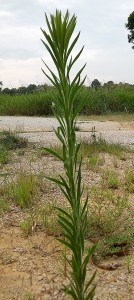
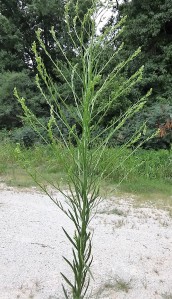
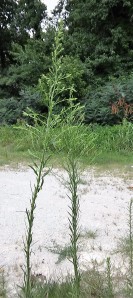

Goldenrod is often unfairly blamed for allergic outbreaks of watery eyes and sneezing in the fall because they seem to grow right alongside Ragweed–the real allergy culprit. I am not saying that some people may indeed be allergic to the fluff that Goldenrod makes in the fall. Immune systems can react adversely to almost anything, but Ragweed is said to be the real, almost universal offender.
Later in the season, Goldenrod becomes more easily distinguishable from other similar stems as they grow arching yellow rods of small flowers for which they are named. Other plants include Common Fleabane, Daisy Fleabane, Horsetail, and Marestail. Depending upon where you live and who you ask these common names are interchangeable. I am not the only one to apply or misapply them. It doesn’t much matter unless your are wanting to repel fleas or eating the plants. If you are, then by all means consult a better identification source than me, because some can make you sick or kill you.
But if making fire with the spindles is your aim, I say if they look more or less like these– straight, sufficiently large, strong, and dry–give it a whirl–in your hands and give it a try. The stems are straight and still fairly small in diameter. Later in the summer, all these stems will get thicker and stiffer and drier as they turn brown and the foliage wilts and falls. The pith that is forming within, now mostly wet sap, will dry and become a solid, but still light center core that has a low ignition temperature–while the outer stem becomes hard and brittle.
There are numerous varieties of Goldenrod. I can’t much tell one from the other, except that some of the stems grow much thicker in diameter. Right or wrong, I have come to call this kind, Solidago. When available and dry enough, these are my number one favorite choice for fire making. The bark and the pitch seem to be just the correct balance to make embers with minimal effort (relatively speaking). There is an added bonus before they become too decomposed and brittle of producing a wonderful pumpkin pie sort of spicy aroma when burning. (Mullein makes fire about as quickly, but it stinks!)

The kinds of Elderberry bushes that are abundant in the South–to which I refer here are smallish bushes that begin the summer with wide clusters of tiny white flowers that have long been valued as edible additions to salads and desserts. They grow all over fields and roadsides throughout the south and much of the north and east. These white flower clusters turn to green and then blueish purple berries, also valued as edible. They are valued for making juices and wines, and desserts and jellies. The stems and limbs grow with straight sections sufficiently long for use as fie spindles. When found dead or harvested while still green and allowed to dry, these stems have a strong outer bark with a pithy center core–that can be trimmed and smoothed to use as sturdy spindles for hand drill and bow drill fire making.
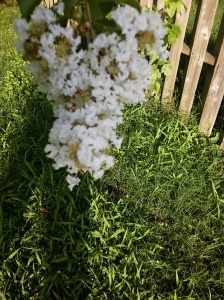
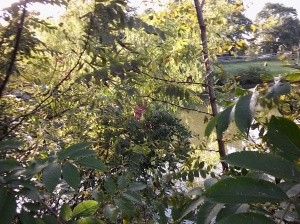
I will plan to get better pictures of Elderberries and replace these. As abundant as they are, they only grow on one place on my property. these are alongside one bank of a pond. The berries are almost obscured amidst a thicket of thorny Black locust seedlings and a willow that is branching out over the water, but can be seen near the center of the photos graphs.

